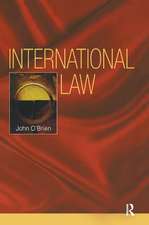Dividing Lines between the European Union and Its Member States: The Impact of the Treaty of Lisbon
Autor Stephen C. Siebersonen Limba Engleză Hardback – 26 iun 2008
Preț: 397.59 lei
Nou
Puncte Express: 596
Preț estimativ în valută:
76.08€ • 81.35$ • 63.43£
76.08€ • 81.35$ • 63.43£
Carte tipărită la comandă
Livrare economică 17 aprilie-01 mai
Preluare comenzi: 021 569.72.76
Specificații
ISBN-13: 9789067042840
ISBN-10: 9067042846
Pagini: 320
Ilustrații: 320 p.
Greutate: 0.64 kg
Ediția:1st Edition.
Editura: T.M.C. Asser Press
Colecția T.M.C. Asser Press
Locul publicării:The Hague, Germany
ISBN-10: 9067042846
Pagini: 320
Ilustrații: 320 p.
Greutate: 0.64 kg
Ediția:1st Edition.
Editura: T.M.C. Asser Press
Colecția T.M.C. Asser Press
Locul publicării:The Hague, Germany
Public țintă
ResearchCuprins
Another Treaty Amendment.- The Debate Over Form — What is The EU?.- The Genesis of The Lisbon Treaty.- From Treaties to Constitution and Back — A Contrast in Design.- An Overview of The Lisbon Treaty’s Significant Innovations.- What are The Dividing Lines?.- Notable Changes That May Affect The EU’s Dividing Lines.- The Character of the EU.- Values and Objectives.- The EU’s State-Like Attributes.- The EU as A Democracy.- A Malleable Entity.- Amending The Treaties — The Unanimity Requirement.- Principles Underlying EU Action.- Institutions and Decision-Making.- The EU Institutions and Organs.- Instruments and Procedures Available to The EU.- Where QMV Replaces Unanimous Voting or Applies to New Subjects.- The Subject Matters of EU Activity.- The Area of Freedom, Security and Justice.- The Union’s Internal Activities and External Action.- Conclusion.- Conclusion.
























